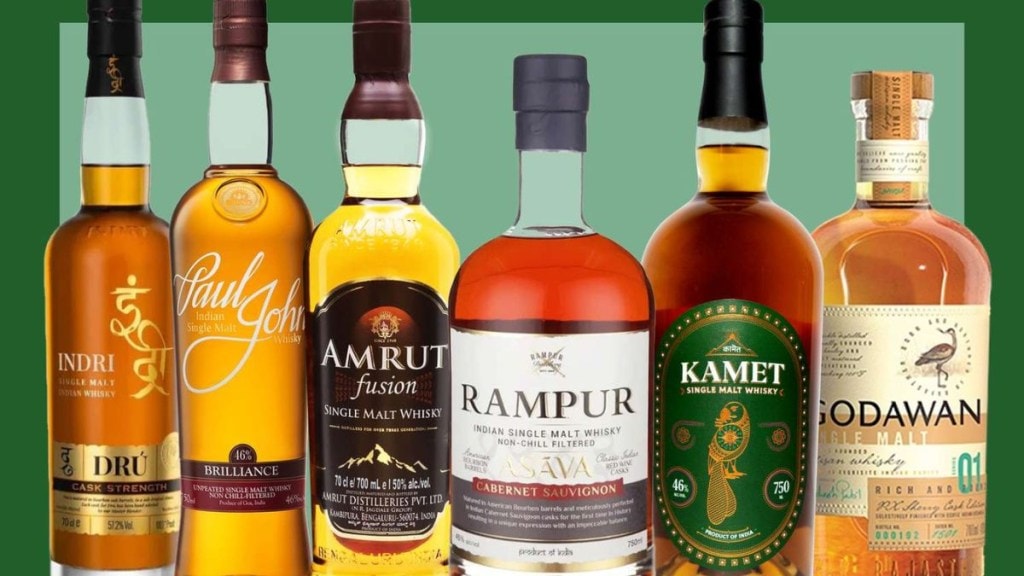India’s place among the world’s great whisky producers is no longer up for debate. The nation’s single malts have transcended the label of “rising talent” to claim their spotlight on the global stage, earning acclaim for their intricate profiles and unmistakable personality. Distilleries pioneering this momentum aren’t merely participating, they’re rewriting the rules, proving that the Indian terroir, a marriage of tropical climate, local barley, and bold innovation, can foster whiskies of extraordinary calibre. We spoke to Major General (Dr) Rajesh Chopra, AVSM (Retd), Founder Director General, Indian Malt Whisky Association, who walked us through not only the distillation process, but also what defines an Indian single malt.
What goes into making an Indian single malt
At the heart of every Indian single malt is a set of uncompromising standards. These are the pillars that give the spirit its soul.
Grain Purity
The mash bill is straightforward: 100% malted barley. This clarity of ingredient is essential—it ensures that the whisky remains true to its single-malt identity, free from the influence of other grains. The traditional malting process awakens enzymes to convert starch to fermentable sugars, igniting the spirit’s journey.
Distillery Origin
Genuine Indian single malt must be born, brewed, and distilled within a single distillery on Indian soil. This unbroken origin thread preserves its sense of place, whether defined by that distillery’s water source, equipment, or the distiller’s philosophy, and gives rise to a whisky that carries its terroir in every drop. This is a clear departure from blended whiskies, which may be crafted from whiskies originating across different sites.
Crafting with copper and care
The transition from fermented wash to refined spirit hinges on time-tested traditions.
Copper pot stills
The use of copper pot stills isn’t aesthetic—it’s essential. Copper purifies the spirit, neutralising sulphur compounds and cultivating a smoother, richer character. This channel ensures nuance over efficiency, setting pot-distilled spirits apart from those made in column stills.
Double distillation
Indian single malts undergo a rigorous two-stage distillation. This process allows distillers to isolate the “heart cut”—the component rich in aromatic compounds and desirable flavours—while discarding the harsher fractions, preserving quality and depth.
Oak, climate and time: The maturation triangle
Distillation may create the architecture of whisky, but maturation in oak is what gives it soul.
A guaranteed age of three years
Indian single malts must mature in oak for at least three years, even though India’s intense heat accelerates maturation. This ensures time for flavours to marry and smooth edges, resulting in a mature, layered spirit that can rival much older whiskies from cooler climates.
What is the role of oak?
Aging must take place in oak barrels no larger than 700 litres—in order to maximize wood contact. Oak lends vanillin (sweeter notes), tannins (structure), and softens harsh facets of the spirit. Woods other than oak simply can’t deliver this balanced complexity.
Tropical Indian climate
India’s climate offers a distinct advantage – tropical maturation heats and cools the barrel deeply and rapidly. Annual oak-seasoned evaporation, known as the “angel’s share”, runs between 10–12%, significantly higher than Scotland’s typical 2%. This intense wood influence elevates a three-year-old Indian single malt into mature, expressive territory.
When these elements converge – pure malted barley, single-distillery origin, copper pot distillation, oak aging, and tropical maturation, the result is a whisky of exuberant depth and distinct individuality. Each expression is a liquid autobiography, a dialogue between its landscape, creator, and craft.
With the formalisation of the “Indian Single Malt” standard, India is doing more than just setting rules. It’s declaring a shared vision of excellence. This is a commitment to the global stage, affirming the country’s capacity to craft spirits that are not only high quality but unmistakably Indian. It’s about protecting the integrity of producers who pour their heritage, skill, and pride into every cask. Cheers!








